- Published: Thursday, 26 March 2020
From September to December 2019, Al Jazeera English followed me around and filmed an update on all my projects: Robogals, Aipoly, Teleport, my speaking and my latest robot arm Jevaroo. They launched it worldwide on 9 March 2020. It’s lovely that Al Jazeera were able to come and capture this moment in time. The theme for the documentary series was Women Make Science and featured 5 stories from around the world.
- Published: Tuesday, 11 February 2020
I flew from Cairns FNQ to Melbourne (a 3.5-hour flight!) for university. I didn’t have enough money to go to university. But I had faith in myself, hope and optimism.
In my second week at university, I applied for the Paterson Scholarship, and by the second month, I received the Paterson Scholarship, which paid me annually for the normal duration of my degree. I was the inaugural recipient of the scholarship. The Paterson Scholarship meant that I had the funds to go to university and do what I wanted to do outside of university - which was, figure out what I really wanted to do with my life. It meant that I didn’t need to take on a part-time or vacation job and I was free to pursue my own projects. The Paterson Scholarship gave me the time and space I needed to start Robogals, while I worked on my engineering and computer science degrees.
Bob and Helen Paterson were the benefactors of the scholarship. Bob Paterson was an alumni of the University of Melbourne. He studied civil engineering, graduating in 1949! He then went on to work at global engineering firm Ingersoll Rand for 34 years, before founding his own company, Pacific Hydro, which he sold in 2005. He used the proceeds from the sale to fund my scholarship.
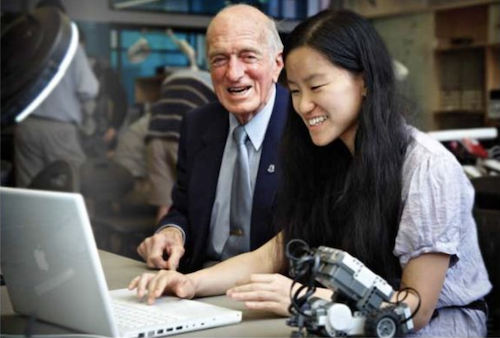
Over the years, I was invited to annual lunches with the Patersons and my successors who received the annual scholarship. It was a nice little community, meeting all the students who came after me. I also visited Bob and Helen in their home, where they even let me film a video with an earlier Teleport prototype! And they came along to my university graduation ceremony, of course!
In late January 2020, Bob Paterson passed. He is survived by his wife Helen and his 3 children. I will always remember Bob, the man whose generosity meant that I could follow my dreams and start Robogals. It was his scholarship money that I put into Robogals in our second to third years when we didn’t have the funds to do our work. Due to the Paterson Scholarship, Robogals grew and flourished in our second to third years by expanding to the UK and by supporting our 5 chapters around Australia through their first full-year of operations. That foundational year of focusing on growing the organisation, meant that we could then go out and get other sources of funding to continue out work and expand, based on the results we achieved that year. Bob and Helen helped my dreams come true. And for that, I am forever thankful.
Thank you Bob and Helen.
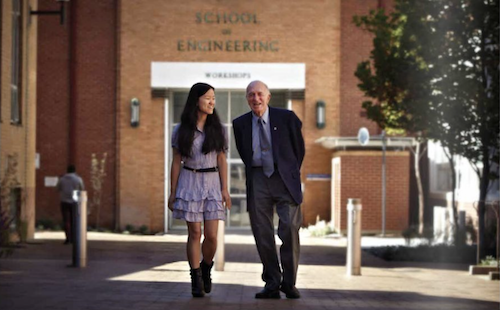
- Published: Tuesday, 28 January 2020
When people ask me abut my influences growing up, I tell them about my piano teacher, Mrs Langtree. I went to my first piano lesson when I was 7 years old, and Mrs Langtree taught me piano from when I was 7 until I left my hometown at 17. For 11 years, I went to her house at least once a week. She nurtured me into eisteddfods, taught me music theory, and coached me into my piano exams. She taught me how to feel the music, she taught me to appreciate music, she encouraged me to sing in front of other people. Most importantly, she didn’t just teach me piano and music, she taught me to forgive myself when I made mistakes. She taught me it was ok to march to my own beat. She taught me to believe in myself. She taught me that practice made me better. She taught me that I could do it.
When I was 7, I went to her house everyday to practise or learn piano. We didn’t have a piano at home because we couldn’t afford it, so Mrs Langtree said I could practise on hers. My mum drove me to her house every single day for a year. When I was 8, mum decided to buy a piano so I wouldn’t have to go to Mrs Langtree’s house everyday.
Still, I went to her house at least once or twice a week after that for the next 11 years for my piano lessons. Mrs Langtree taught me so much! She didn’t just teach me to read music, she taught me to feel music. She didn’t just teach me music theory, she taught me to appreciate music. She taught me that the best music transcends technical ability. She taught me that what you’re thinking and what you’re feeling when you play your instrument - the audience can hear and feel that too. She showed me leadership videos from great leaders like Ben Zander. She showed me Ben Zander talks about how feeling the music - being one with the music - made you a better musician. She showed me videos on the history of music. She taught me classical, jazz, pop, contemporary, and Australian music. We studied the lives and stories of famous composers throughout history. She taught me to appreciate music, culture, art, history, and geography. She taught me patience. Those difficult piano trills that seemed so difficult to play - after a few weeks of practise, I could master. She taught me how to approach a difficult piece of music - focus on mastering the trickiest bits first. She taught me to learn to appreciate the rigour of scales. She didn’t just teach me music. She taught me about life. She taught me to be kind to myself.
Mrs Langtree had 7 children. Her youngest son Paul taught me art and drawing when I was 9 and 10. Over 11 years, I got to know many of her kids and grandkids. I got to know her family, her stories, her life. She had a deep sense of community - she taught kids all over the neighborhood piano, and she played the organ and piano at church.
When I was really young, she told me she had been in TIME magazine when she was younger! A TIME photographer came to Cairns and took a photo of the organ-player at St. Monica’s Cathedral. She was the organ player! And she made it into the print edition! I didn’t fully believe it was true until she showed me the TIME magazine with her photo in it, playing the organ - clear as day! I didn’t think that TIME would come to my small part of the world! I thought it was so cool - that someone from my hometown - someone I knew - had been in TIME magazine. She showed me that you could make an impact, no matter who you are or where you’re from.
Mrs Langtree would cut my fingernails all the time when I was a kid, with little scissors. She would say that it was probably all the rice I ate that made my fingernails grow so quickly. Sometimes she would accidentally cut my skin and that would hurt!
Mrs Langtree was always so good to me. She’d accompany me to the eisteddfod. She was there for my first eisteddfods. Then she said I won more when she wasn’t there - so she stopped going. :). When Australian composer Peter Alexander visited Cairns, she took me to his masterclass. For many years, she would drive me home after my piano lesson (because my mum was still at work and couldn't pick me up) and go swimming at the public swimming pool next to my house.
When I was in year 10, for my graphics assignment, I wanted to draw a grand piano using Computer-Aided Design (CAD). She let me painstakingly measure her baby grand piano for many hours over many weeks, so I could create this piano model in CAD. I created the most epic CAD model of her baby grand piano with all the hammers, wires and springs showing.
And she showed me herself how persistence and hard work could make miracles happen. When I was in high school, she had a stroke, leaving her unable to move her hands or walk. Through exercising her brain and her fingers, and helping me prepare for my piano exams, she rehabilitated herself and was able to once against sight-read sheet music and play the piano. She showed that if you just put your mind to it, then you can overcome any limitation - even the limitations of your body. After she recovered from her stroke, she went back to teaching students all across the neighborhood again.
Mrs Langtree was in my life, growing and nurturing me from when I was 7 until I was 17 and left for university. She listened when I told her about things that had upset me at school. A constant teacher, mentor and adult figure in my life for 11 years. Her impact on me is profound.
I’m so lucky to have had Mrs Langtree in my life, every week for 11 years. To have had her love, support, guidance and mentorship - I feel so fortunate.
For over the last 10 years, I told Mrs Langtree every time I saw her that she was my favorite teacher. I will remember Mrs Langtree for the rest of my life.
Mrs Dorothy Mary Langtree passed on 2 January 2020. Her obituary is here: https://www.mytributes.com.au/notice/funeral-notices/dorothy-mary-langtree/5228049/
- Published: Tuesday, 31 December 2019
The lovely Sandra Sully invited me to appear on her podcast, Short Black, after we spoke at Vogue Codes together in 2018. Check out our conversation here: https://play.acast.com/s/short-black-with-sandra-sully/maritacheng
Here's some photos of Sandra Sully and I sharing the stage at Vogue Codes in Sydney 2018. Good times, and that was a beautiful event that Vogue put on.
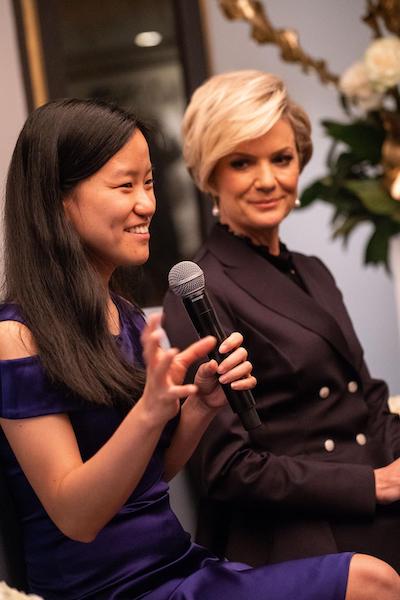
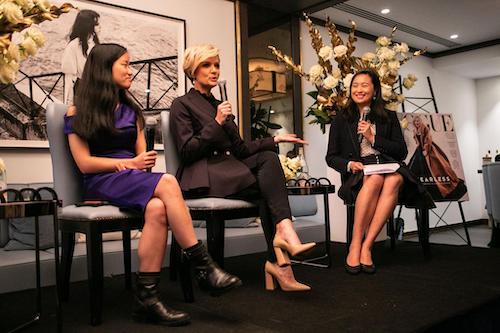
- Published: Saturday, 23 November 2019
Engineers Australia and Engineering Heritage Australia decided to feature me as one of 100 Australian engineering leaders in their book, “Anything is Possible: 100 Australian engineering leaders" to celebrate their centenary in 2019. Here’s my inclusion!
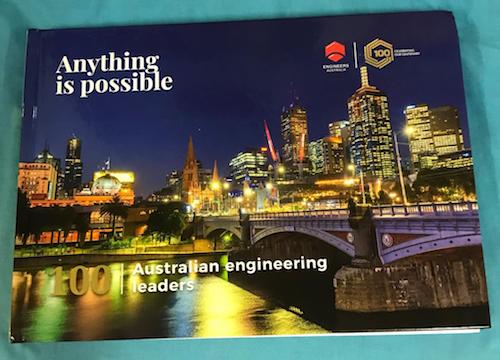
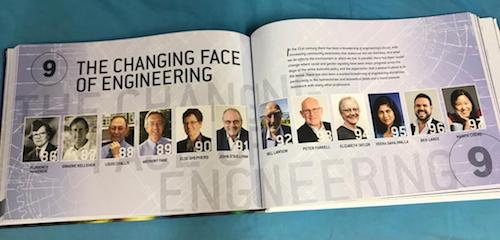
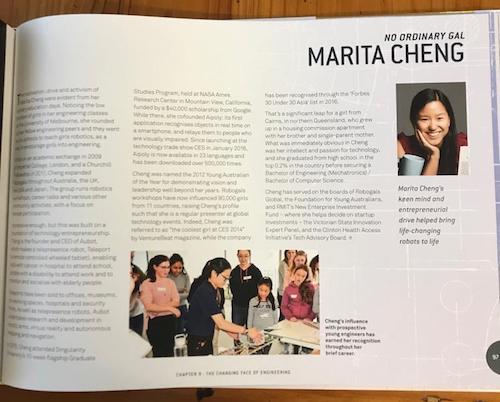
About Me
 Forbes named me a world's top 50 woman in tech & 30 Under 30. I founded Robogals and Aipoly and was Young Australian of the Year 2012. Currently working on robotics company Aubot. I'm the youngest Member of the Order of Australia (AM) and I give speeches around the world.
Forbes named me a world's top 50 woman in tech & 30 Under 30. I founded Robogals and Aipoly and was Young Australian of the Year 2012. Currently working on robotics company Aubot. I'm the youngest Member of the Order of Australia (AM) and I give speeches around the world.
I tweet @maritacheng and I'm on Facebook.
Subscribe
Random Articles
-
Robots for kids missing school
It’s so exciting seeing our robots make a difference in the lives of others. Six-year-old Freyja has a suppressed immune system, so coming into...
-
Phoenix, Arizona
I love exploring new cities! So I was super thrilled to visit Phoenix in Arizona, and speak at ASQ’s Lean and Six Sigma Conference as their opening...
-
NBN STEMpreneur
The NBN Stempreneur Initiative is a virtual learning program for kids in eight regional schools. It shows young people the breadth of opportunities...
-
Aipoly at Singularity University
Aipoly aims to help the blind navigate the world. Our first application enables blind people to take a photo of their surroundings, and have it...
-
Australian Office in Taipei
In March this year, I was invited to the Australian Office in Taipei, Taiwan, to give a speech for International Women’s Day. During my 10-hour...
-
I've done what I've done
When I became Young Australian of the Year a year ago, I wanted to give as many speeches as I physically could, I wanted to contribute to the...
-
Aipoly Autonomous Store
I attended CES with members of the Aipoly team. Aipoly were fortunate to be awarded a CES Best of Innovation Award for the second year in a row! ...
-
Where are you not looking?
You’ve brainstormed and tried all the keywords that you could think of in Google, you’ve asked Jeeves, you’ve spoken to your lecturers and you’ve...
-
Woman in STEM
For National Science Week, I spoke at the Super STEM Careers event about my career in STEM.
-
Al Jazeera Women Make Science Documentary
From September to December 2019, Al Jazeera English followed me around and filmed an update on all my projects: Robogals, Aipoly, Teleport, my...


